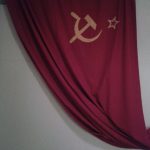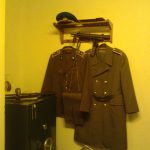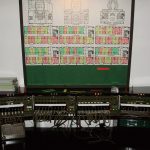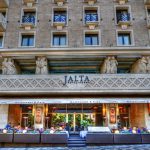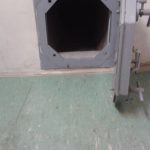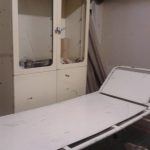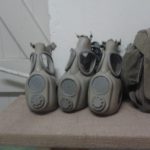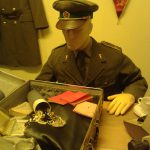Prague Tours ~ Czech Tours ~ Eastern Europe Tours
Communism and Nuclear Bunker Tour of Prague
From EUR 102.00 Price info below Tour of Prague focusing on Communism in CzechoslovakiaOn February 25, 1948, Czechoslovakia, until then the last democracy in Eastern Europe, became a Communist country, triggering more than 40 years of totalitarian rule. Under Communism workers were worshipped as heroes and exploited as propaganda for the régime. Communist ideology permeated citizens’ lives and dominated all aspects of society. Czechoslovakia’s political decisions were dictated by the Soviet Union. Those who did not comply with socialism were not only interrogated, intimidated, and put under surveillance but also subject to house searches. Bribes abounded. Tradesmen headed companies while members of the intelligentsia did menial jobs. During this unique tour you will visit places associated with those turbulent years of totalitarian rule in Czechoslovakia: The Communist Coup of 1948After World War II, Czechoslovakia looked favorably on the Russians, who had liberated them. By 1946, Communists were well-represented in the Czechoslovak government. In 1947, however, Czechoslovakia wanted to obtain Marshall Aid from the USA, but it was not possible due to USSR intervention. The 12 non-Communist ministers resigned, predicting that democratic President Edvard Benes would be able to form a new government that would exclude the Communist Party. Violent Communist-led demonstrations erupted. The Army was the only force that could stop the Communists, but it was run by Communist General Ludvik Svoboda. President Benes was afraid the Soviets would intervene or that a civil war would start, so he did not try to convince non-Communists to take action. Benes signed a new totalitarian government. The Stalinist 1950s and the show trialsDuring the beginning of the brutal and nightmarish 1950s, Soviet Union Premier Joseph Stalin directed the Czechoslovak Communists to carry out purges, and the nation held the largest show trials in Eastern Europe. Over a six-year period, from 1949 to 1954, the victims included military leaders, Catholics, Jews, democratic politicians, those with wartime connections with the West as well as high-ranking Communists. Almost 180 people were executed. There was no such thing as a fair trial as judges cooperated with the country’s leadership. The defendants, branded guilty before the trial began, even had to rehearse their testimonies in advance, as if it all were some cruel play performed on a stage instead of in a courtroom. 1968 and the Prague SpringFirst Secretary of the Communist Party Alexander Dubcek wanted Czechoslovakia to embark on its own individual path while maintaining a socialist government. The country experienced liberal reforms that allowed writers to demand that the purge victims of the 1950s be rehabilitated and allowed social and political organizations to be free of Communist Party control. The April 5 Action Program described what came to be referred to as “socialism with a human face.” It demanded full equality in economic relations between Czechoslovakia and the USSR and urged the Soviets to take their advisors out of the country. Dubcek and his followers wanted real elections for party officials with secret ballots. National minorities were represented in institutions, and strikes were legalized. Censorship was abolished on June 26, 1968. The Soviet InvasionThe USSR was less than pleased with the Dubcek-directed developments in Czechoslovakia. Negotiations between the Soviet Union and Czechoslovakia failed. On the night of August 20-21 of 1968, 200,000 troops from the Warsaw Pact countries of the USSR, Poland, East Germany, Hungary, and Bulgaria entered the territory of their defenseless ally, as tanks crushed the liberal reforms of the Prague Spring in the largest military operation in Europe since World War II. Jan PalachAs the rigid Communist policy of normalization set in, 20-year-old Charles University student Jan Palach was dissatisfied with the resigned attitudes of citizens toward the regime’s harsh policies. On January 16, 1969, at 4 pm, Palach set fire to himself on Prague’s Wenceslas Square, protesting the lack of freedoms and the passivity of the citizens. With 85 percent of his body covered in third-degree burns, he passed away three days later. Jan Palach Week in 1989On the 20th anniversary of Palach’s sacrifice, during the so-called Jan Palach Week lasting from January 15 to January 22, 1989, there were many demonstrations against the totalitarian regime. Protestors were beaten by police, who also used water cannons to keep them at bay. On January 15, 1989, a citizen named Vaclav Havel was arrested at the statue of Saint Wenceslas and sent to prison. The Velvet RevolutionCzech and Slovak students were honoring students killed during the Nazi Occupation on November 17, International Students Day, by marching through Prague in a peaceful demonstration. When they came to National Avenue, the police beat the students. This police brutality triggered what is today called The Velvet Revolution – the period from November 17 to December 29, during which dissidents and students protested against the Communist regime. Theatres went on strike, and from November 19 to late December demonstrations took place in Prague and other cities. Dissident playwright Vaclav Havel organized the Civic Forum, which openly challenged the Czechoslovak political system and demanded that all political prisoners in the country be released. On December 10, the first largely non-Communist government since 1948 was sworn in. Dubcek was named speaker of the federal parliament on December 28, and Havel was elected president of the country on December 29. Museum of Communism and Museum of the cold war in PragueOn you wish we can also visit the Museum of Communism or the Museum of Cold War in Prague. | |
| Location | Prague |
| Sights to See | Wenceslas Square, New Town, Prague´s Old Town, Lesser Town, Prague Castle |
| Interiors | Museum of Communism, Museum of Cold War |
| Included | The local, licensed, experienced and fun tour guide, Prague map with discount coupons, Prague souvenir magnet (supporting charity) |
| Excluded | Entrance fees, food, and drinks |
| Availability From-To | All year round |
| Departure Time and Location | We will pick you up at the agreed place and time, most likely at the reception of your hotel in Prague. (To be specified in the request form below) |
| Duration | 4 hours |
| Return Location | We will finish the tour anywhere you wish in Prague. |
| Means of Transportation | Walking and/or Walking / Public Transportation (upon request) |
| Required Walking Ability | Low |
| Language | All services are in English, but exceptions can be made in advance. |
| Price Info | Tour Guide1-4 people | Tour Guide5-10 people | Tour Guide11 and more |
| CZK / EUR / USD | 2400 / 102 / 104 | 2800 / 119 / 122 | 3600 / 153 / 157 |
| Price Info | CZK / EUR / USD |
| Tour Guide1-4 people | 2400 / 102 / 104 |
| Tour Guide5-10 people | 2800 / 119 / 122 |
| Tour Guide11 and more | 3600 / 153 / 157 |
| Payment Conditions |
